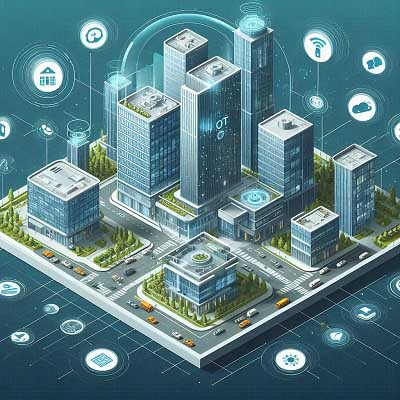Smart Buildings and IoT

Smart Buildings and IoT: The Future of Intelligent Infrastructure
Introduction
Smart buildings integrate digital technologies such as IoT (Internet of Things), automation systems, and data analytics to optimize building operations, improve occupant comfort, and reduce energy consumption. According to Deloitte, smart buildings can reduce operational costs by 30% and increase asset value.
Core Technologies
IoT Sensors – Monitor temperature, humidity, motion, and lighting.
2. Building Management Systems (BMS) – Centralized control of HVAC, lighting, and security.
3. Predictive Maintenance – Analyzing sensor data to detect and resolve issues before failure.
4. Smart Lighting and HVAC – Adaptive systems that adjust based on occupancy and conditions.
5. Energy Analytics – Real-time dashboards to monitor consumption patterns.
Benefits
Energy efficiency and cost savings.
• Improved comfort and productivity.
• Better facility management through real-time data.
• Enhanced security and emergency response.
• Compliance with green certifications like LEED and WELL.
Applications
Smart buildings are being adopted in commercial offices, hospitals, educational campuses, hotels, and residential towers. Examples include The Edge (Netherlands) and Salesforce Tower (USA), which use real-time data and IoT for operational intelligence.
Challenges
High initial investment in infrastructure.
• Data security and privacy concerns.
• Integration with legacy systems.
• Need for technical expertise and staff training.
Conclusion
Smart buildings represent the future of urban development. They not only provide efficiency and sustainability but also offer a better living and working environment. As cities grow and digitization expands, smart building systems will become the global norm.
References
Deloitte (2022). The Smart Building Revolution.
2. International Energy Agency (2021). Digitalization and Energy.
3. Siemens (2020). Intelligent Infrastructure Whitepaper.



